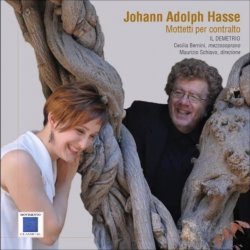
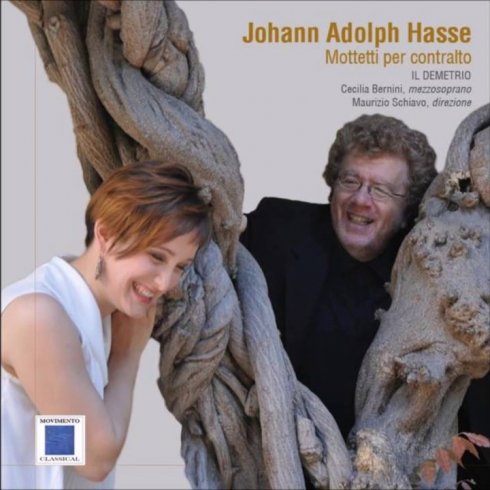
Mottetti per contralto
CHORI ANGELICI - MUSIC AT VENETIAN HOSPITALS
Venice, February 1730. Artaserse, a new opera seria by Johann Adolf Hasse, débuts al S. Grisostomo theatre. The author is a young and acclaimed musician tram Hamburg. A tenor in his beginning, during the 1720s he lives in Naples, where he studies with A. Scarlatti. There he meets Farinelli and Metasta sio, young and emergent like him, and a lite friendship starts with both of them. The town is stirring, the operatic world is challenging: Hasse gains soon a wide and undisputed success as a composer of Serenate, Intermezzi and Drammi per musica. In Venice lor his Artaserse, Hasse is already so acclaimed thai the famous Ospedale degli Incurabili offers him the direction of its musical activities nominating him Maestro di coro. The tour major Hospitals (Pietà, Incurabili, Derelitti, Mendicanti) are philanthropic and secular institutions which have no equal outside Venice. They deliver housing and assistance to sick and poor people, pilgrims, orphans and abandoned babies. They offerto the masi talented girls showing musical aptitude the opportunity of receiving a thorough grounding in music studying with celebrated teachers such as Porpora, Vivaldi, Galuppi, Jommelli (this is done noi merely from charitable reasons: by Hasse's time, public performances alIemale musicians al Venetian Hospitals are followed by passionale paying audiences). A few years of hard work and a rigorous discipline turn the young student girls into skilled musicians, who enchant with their beautiful voices and their instrumental virtuosity. Al the most important teast days of the Liturgica! Year and al Vespers, Venetian and foreign people (oflen important travellers undertaking the Grand Tour) crowd the churches of the Hospitals lo listen lo them. The girls perform hidden by gauze curtains and a metal grille, thai prevent the public from seeing them: the masi important thing here is music, which expands through the church. Celestial "Chori angelici" which leave the audience breathless.
THE MOTETS
First of ali the Hospital requires lo the new Maestro di coro to provide new music lor the Liturgy: a duty which Hasse fulfils producing a considerable number of Psalms, Antiphons, Motets. The !alter are solo virtuoso compositions far soprano or alto, largely cultivated in ali Venetian Hospitals.
With this kind al composition the most gifled figlie di coro (the Iemale musicians) have the opportunityto
{ show oli their beautiful voices and their outstanding technique. They are accomplished singers who can compete on equal terms with the most celebrated opera colieagues.
With almost no exceptions, Hasse's motets consist of tour movements: a first aria foliowed by a recita tive, a second slower aria (usualiy an Adagio), a brilliant Alieluja. The arias are always of "da capo" type (i.e. A-B-A form); as usual, al the repetition of the opening section the soloist is expected to improvise ornaments, variations and cadenzas. The final movement, the Alleluja, has a simpler structure: it's a short binary form, preceded by an orchestrai introduction.
CHORI ANGELICI LAETANTES
The brightness o! the opening theme of the first aria o! this motel, composed around 1735 lor Elisabetta Mantovani (the most renowned alto at Incurabili), fully expresses the joyful conteni o! the text, the glory of the heavenly court. The aria Bone Jesu te quaerentis, following the recitative Mundi neglecta pompa, is a deep Adagio that, as always in Hasse's music, is the heart o! the whole composition. A sunny Alle/uja leads peacefully the motel to the conclusion.
D!CIT COR: PONE TIMORES
The first aria o! this composition, written in 1735 lor Cecilia Nassa, is marked by a great richness of thematic elements that produces a complex but elegant interweaving between voice and orchestra. The slow aria Nocte obscura tenebrosa, introduced by the many-sided recitative O cor, deceptum cor, is a wonderful typical baroque example of a natural image, becoming metaphor o! an emotional state. With his music Hasse masterfully interprets the sense ot dismay suggested by the lines, creating a suggestive atmosphere. A lively Alle/uja frees the spirit !rom the nocturnal uneases ending the motel with a renewed optimism.
MUNDI AMORES RELINQUENOO
This motel was composed in 1739 and, as the previous, was dedicated to Cecilia Nassa. As announced by the serene opening theme, its generai tone is more intimate and introspective. The text is an exhortation to renounce the pleasures of the world to reach the contemplation of God. The short recitative Decepti o vos morta/es introduces the aria Si non amas, whose striking point is the ecstatic vacai line. The final Alleluja ot this motel, less shining than usual, is quiet and reflective.

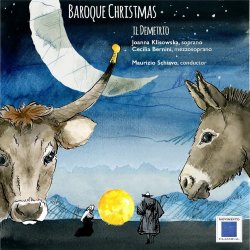
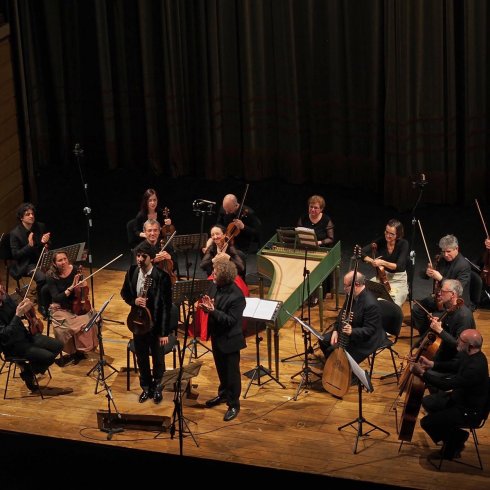
Ensamble “IL DEMETRIO”
The Demetrio is one of the most lively groups with original instruments of the Italian scene, it was founded in 2008 in Pavia by Maurizio Schiavo and takes its name from the musical history of the city: The Demetrio is in fact the title of the opera of the Bohemian Josef Myslivecek who in 1773 inaugurated the Teatro dei Quattro Cavalieri, today the Teatro Fraschini.
The “Demetrio” ensemble, since its early years of activity, has given life to a project of rediscovery and enhancement of the musical heritage of Pavia and its province by proposing numerous important compositions for the first modern performance. Among the compositions brought to light we remember the opera " il Demetrio" performed during the “Festival dei Saperi 2010”, the compositions for the cinema "Sound Landscapes” by Franco Vittadini , “Tantum ergo” for soloists, choir and orchestra and Dixit Dominus for bass, viola concertante and orchestradi Alessandro Rolla, three compositions for the Holy Week (Adoramus te, Miserere and Christus factus est) for choir and strings by Antonio Cagnoni.
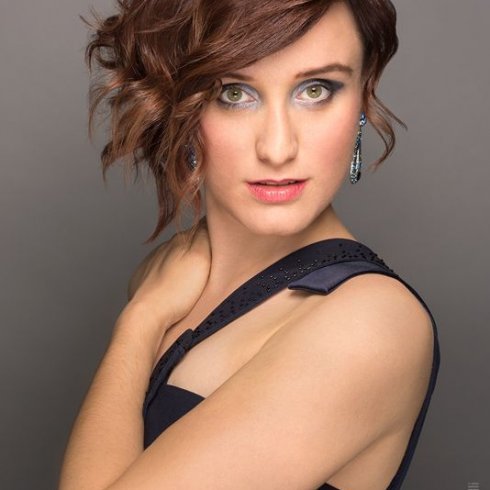
Cecilia Bernini
She began the study of singing and graduated from the Istituto musicale F.Vittadini in Pavia under the guidance of M. Fernando Cordeiro Opa. She continued his studies with Lavinia Bertotti, Sara Mingardo and Sonia Prina , deepening the interpretation of the baroque repertoire . She attended Marjana Lipovsek’s masterclass at the Interationale Sommerakademie Mozarteum in Salzburg and participated in masterclasses with Gregory Kunde and Ulf Bastlein. She is currently perfecting her technique with Sonia Ganassi, guide of M Fernando Cordeiro Opa. She has participated in numerous music festivals including : “Festival dei Saperi” in Pavia, where he sang the role of Arsace/ Demetrio in the Myslivecek’s “Demetrio” , “Festival Urbino Musica Antica” , “Festa dell'Opera del Teatro Grande” in Brescia and the festival “Un'isola di musica” of the “Teatro Lirico” in Cagliari ; at the “Piccolo Festival del Friuli 2014” she was a soloist in Mendelssohn’s “A Midsummer Night's Dream”, while for the festival “Corpus Hominis” in Brescia, she performed Vivaldi’s “Stabat Mater” with I solisti di Cremona. She collaborated with the ancient music ensemble "Il Demetrio" , directed by M Schiavo, with whom she recorded the first modern performance of the “sacred motets for alto” by Hasse. She performed as a soloist in the Mozart’s Coronation Mass KV 317 ,conducted by Francesco Ommassini, at the "Fraschini" theatre in collaboration with the Collegio Ghislieri of Pavia, and was a soloist in Beethoven’s Ninth Symphony, conducted by Lorenzo Passerini, with the Orchestra Vivaldi and the choir of the Municipal Theatre of Piacenza for the opening of the Symphonic Season 2015/16 of the Teatro Sociale di Como and Sondrio and for the Music Weeks at the G. Verdi Conservatory in Milan.
In summer 2016 she again sang the Ninth Symphony at the Teatro Politeama in Palermo.
She made her operatic debut as Third lady in Mozart’s Die Zauberflöte at the Teatro Marrucino in Chieti in 2013 and won the competition for the role of Clarice in Galuppi’s “Il mondo della luna” for the “Piccolo Festival del Friuli (2014)”. Also active in the contemporary repertoire, she played the role of Sharma in the opera “Milo, Maya e il giro del mondo” by Matteo Franceschini, under the direction of Leboutte, premiered at the Teatro Sociale in Como for “As.li.Co. Opera Domani 2015”. Following the As.li.Co Competition (2016), she began his collaboration with Opera Lombardia, and she was Cherubino in “The marriage of Figaro” under the direction of Stefano Montanari, and also in the staging of the San Carlo in Naples with the direction of Mario Martone. She also sang Rosina in “The Barber of Seville” for the 2016 and 2017 summer seasons of the Orchestra Vivaldi, conducted by Lorenzo Passerini. She sang the role of Hermia in Britten’s “A Midsummer Night’s Dream” in the Lombard circuit and in Reggio Emilia with Francesco Cilluffo as the conductor and Ferdinando Bruni and Elio de Capitani as stage directors, she played the role of Zaida in “Il Turco in Italia” at the Teatro Sociale in Como, with Christopher Franklin as the conductor and Alfonso Antoniozzi as stage director. She sang , at the Florence Opera, as Second lady in the “Die Zauberflöte”, with the conduction of Roland Böer and the stage direction of Damiano Michieletto.
She made her debut at the Teatro Regio in Parma for the Verdi Festival 2017 in the “Stiffelio” with G. García Calvo as the conductor and Graham Vick as stage director, and again in Parma she was the cover of the role of Sara (Sonia Ganassi) in the “Roberto Devereux”. She will sing “Giovanna” in the “Rigoletto” at Ravenna, staged by Cristina Mazzavillani Muti, conductor Hossein Pishkar.
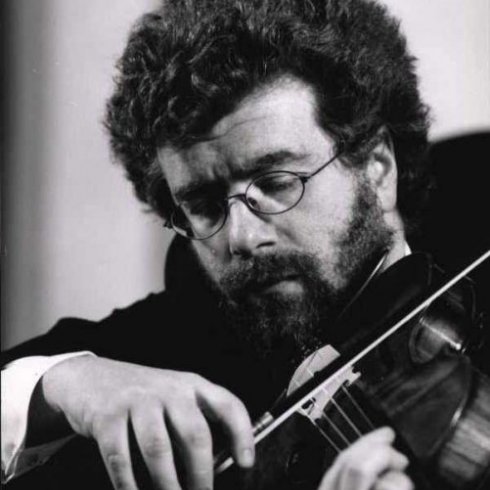
MAURIZIO SCHIAVO
A great musician and a great talent, Maurizio Schiavo has studied baroque violin with Enrico Gatti and has followed master classes with Piero Toso and Sigiswald Kujiken. He also attended composition courses and was a student of Eliodoro Sollima and Niccolò Castiglioni: his works have been performed in important Italian contemporary music festivals. In 2008 he founded “Il Demetrio” ,one of the most lively groups with original instruments of the Italian scene , mainly devoting himself to the performance of the classical and baroque repertoire, combining the interpretative commitment with the musicological research on the Italian repertoire of the 600’-700’. He graduated in orchestral conducting with Giampiero Taverna and in orchestral conducting for the opera with Umberto Cattini. He has conducted in the first modern performance, also taking care of the revision, unpublished compositions by Antonio Cagnoni and Franco Vittadini; he has recorded the Quartets for flute and strings and he has conducted in the first modern performance the sacred compositions. As an instrumentalist he has reproduced the “Mottetti per voce e strumenti” by Bianca Maria Meda and numerous compositions by Alessandro Rolla.
